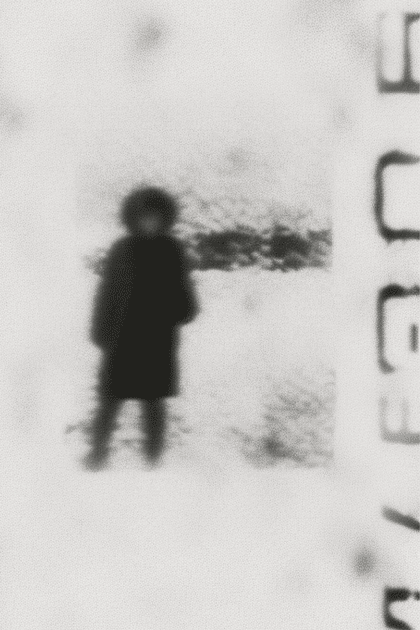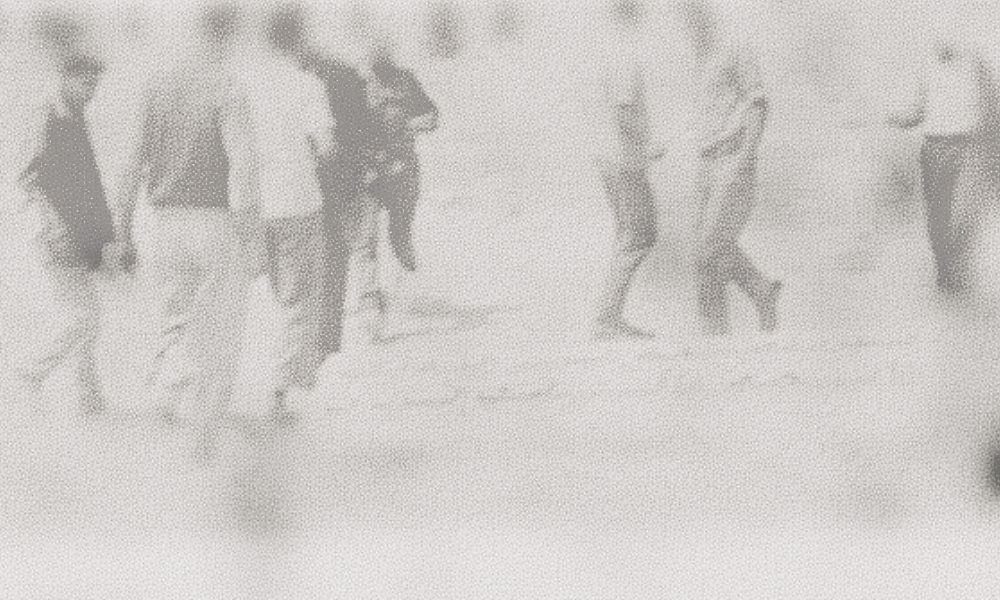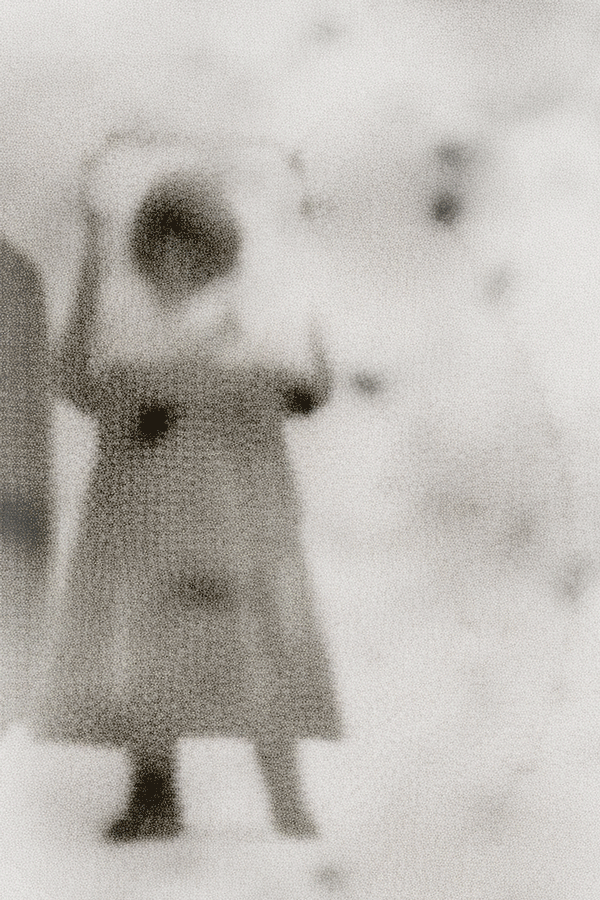Forgot Your Password?
New to The Nation? Subscribe
Print subscriber? Activate your online access
Bethlehem—When the weather permits, Azhar Abu Srour visits the grave of her son Abed. The family’s cemetery is across the street from Al-Ayda refugee camp in Bethlehem, where she lived for many years. She washes the stone of her 19-year-old son, as is the custom in Palestine, especially during Eid and Ramadan. But Abed’s grave is different from those beside it. It’s empty.
“It’s an open grave,” Azhar explains, performing the duties of any grieving mother. “I treat it like he’s inside.”
Abed’s body is actually buried in a plot on an Israeli military site. Somewhere beyond the occupation’s walls, checkpoints, and sniper towers, his remains lie disregarded and unnamed, marked only by the number “141.”
Since 2016, Israeli authorities have held Abed’s corpse in postmortem detention after Abed orchestrated a bus bombing in Jerusalem. He is one of at least 370 dead Palestinians whose bodies Israel’s military are keeping frozen in morgues or buried at undisclosed locations.
The detention of Palestinians after their deaths is a decades-old practice. The contours of the law that defines postmortem detention have changed dramatically since 1964, when the first Palestinian was buried in an unnamed grave in Israel’s infamous “Cemetery of Numbers.”
While Israeli courts have enshrined this practice in the language of maintaining security, bereaved families feel that they are being collectively punished. Human rights organizations cite postmortem detention as just one of many ways that Israel’s military apparatus extends its complete control over Palestinians, from the time they’re born to beyond their deaths.
On the afternoon of Monday, April 18, 2016, the Abu Srour family sat down for lunch at their home in the middle-class enclave of Beit Jala. When they finished, Abed called his grandmother in Syria and then decided to go out for ice cream.
Warmth beams across Azhar’s face when she reminisces about her son. “He asked me if I wanted any,” Azhar remembers, wincing as she’s struck by a flash of pain. But her smile never breaks. “Then, he didn’t come back.”
Unbeknownst to his family, Abed had a plan.
After leaving his family’s home, he boarded an Egged 12 bus headed for Jerusalem. Just when it passed the Green Line into the Israeli neighborhood of Talpiot, an explosive he planted in the back detonated. Although the bus erupted in flames, there were no immediate fatalities. Abed was critically injured alongside 20 Israeli civilians and taken to a hospital.
Meanwhile, Azhar frantically called his mobile. It was off. Beginning to worry, she and her husband, Muhammad, contacted his friends and looked for him everywhere. The next day, they went to the police and asked if he had been arrested or sent to the hospital, to no avail. Then they went to the Palestinian Security office. “We told them we can’t find our son, maybe the Israelis arrested him.” At about noon, an Israeli officer called Azhar.
“They wanted my husband to come and meet them,” she recalls, but had no further information. Muhammad went, called Azhar and assured her everything was okay. But then he stopped answering his phone.
At 3 am on Tuesday, occupation forces ransacked the Abu Srour’s house. “I don’t think they came to find anything, just to crush everything,” Azhar says. She pleaded with the officer for answers. “He told me that my son was ‘half-martyred,’” meaning he wouldn’t disclose whether Abed was dead or alive. 
Muhammad was called in to identify Abed in his final hours, but his face was unrecognizable. This was the last time he saw his son. On Wednesday, April 20, Abed died. Azhar found out only when his death was announced on a television broadcast.
The circumstances of his immolation were as much a shock to the Abu Srour family as his death itself. It was revealed that Hamas recruited Abed. His parents didn’t know. To his mother, he was a bright kid who loved animals and environmentalism, and most of all, his country. “He was very quiet and friendly,” Azhar says, but he was filled with anger when confronted by the relentless brutality of the Israeli occupation. In an interview with The Times of Israel shortly after the attack, his parents grasped at answers.
Ultimately, they concluded he wasn’t immune to the hopelessness around him, despite everything they provided him. “Israel caused this generation to act this way,” his father told the Times, referring to a period from 2015 to 2016 that many have unofficially called the “Intifada of Individuals.” This wave of violent incidents, committed by “lone wolves,” has been credited to increasing Israeli despotism combined with weak Palestinian political leadership.
“After that, I thought they would give us Abed,” Azhar says, “but they told us they would not release his corpse.” She exhales slowly. “Then our long journey started. For seven years.”
Azhar, like many Palestinian families in similar situations, entered a long and arduous legal battle to repatriate her son’s remains. Navigating the bureaucracy of the Israeli courts has left her feeling frustrated and powerless.
After Palestine shifted from Ottoman to British administration in 1919, the new colonial army instituted defense regulations that dictated how to bury Arab fighters who died while incarcerated during the Great Revolt from 1936 to 1939. According to Regulation 133(3), “the body of any person who has been executed at the Central Prison, Acre, or the Central Prison, Jerusalem, shall be buried in such cemetery of the community to which such person belongs.”
But in 1948 Israel declared its sovereignty from the British Mandate through the besiegement of indigenous Palestinians. The new nation retained Regulation 133(3) with an important caveat: It was amended to give military commanders complete control over where a body is buried, as opposed to the original “community to which such person belongs.” This is the legal basis of postmortem detention, and over the last 80 years the scope of the law has expanded greatly. Namely, who is subject to postmortem detention by the military (from “enemy soldier” to the blanket term “terrorist”) and when the state is entitled to seize bodies (from “times of war” to “forever war on terror”).
Regulation 133(3) can now impose restrictions on funerals when a body is returned to a family. When Palestinian prisoner Mustafa Arabat succumbed to torture in 1992, Israeli courts ruled in favor of the military to enforce that his funeral be held in the middle of the night and only attended by immediate family. Today, families whose bodies are eventually returned to them must abide by the military’s rules on how to express their final rites. Israeli law explicitly defines these funerals as a threat to “public order” and grants soldiers power over a family’s grieving.
Mourning is one of the most palpable forms of defiance that happens publicly in the occupied territories. The military’s repression of the right to mourn is a repression of the right to protest.
In 1995, Israel’s High Court ruled that it was “reasonable” to use the corpse of suicide bomber Hassan Abbas as a bargaining chip with Hamas in Gaza, in exchange for information about the location of a buried Israeli soldier. This set up a new precedent for necro-political exchange, and further incentivized the withholding of corpses. But as with all forms of bargaining that happen between Israelis and Palestinians—between the occupiers and the occupied—it is important to acknowledge the power imbalance.
The bodies of Hadar Goldin and Oron Shaul are currently the only Israeli soldiers in custody of Hamas. Meanwhile, Israeli forces are withholding hundreds of Palestinian corpses. 
Such treatment of the dead–even in times of war–contradicts both Article 17 of the First Geneva Convention and the original scope of Regulation 133(3) itself.
The implementation of this law is not without its challengers. In 2008, the Jerusalem Legal Aid Counsel (JLAC) launched two initiatives: the National Campaign for the Retrieval of Palestinian and Arab War Victims’ Corpses and the Disclosure of the Fate of the Missing. Two years later, Israel allowed the family of Mashour Arouri (who died in 1976) to exhume his remains from the Cemetery of Numbers—a historic first. Alongside mourning families, organizations such as Al-Haq, B’Tselem, and Samidoun continue to advocate for the repatriation of Palestinians, the last of which launched a week of mourning in March 2023.
Although Israeli governments have supported this and other repressive laws, on rare occasions the Israeli judiciary has ruled in favor of Palestinian families. After reviewing a petition filed by JLAC in 2017, the High Court ruled against the legitimacy of the state’s power to withhold bodies.
That opinion, set into motion by Justice Yoram Danziger, acknowledged that there was no security-based justification for postmortem detention. The ruling allowed the government a six-month period to draft legislation about this issue, rather than release dead prisoners. For the Abu Srours, there was a window of time in which Abed’s incarceration was in clear violation of Israel’s own court decision—yet they never received him to be properly buried, as his release was caught in the bureaucratic stasis of the courts. In 2019, the High Court reversed Danziger’s 2017 opinion.
Danya Al-Saleh and Samar Al-Saleh
Mohammed El-Kurd
Ayah Kutmah
“Even now, I’ve requested to visit his grave for the second time, because I was informed they moved his body from the mortuary to the Cemetery of the Numbers,” says Azhar. Her request was denied.
Israeli law explicitly states that the only bodies Israel is permitted to withhold are those they determine “belong to Hamas,” or carry out attacks they define as “exceptional.” Despite this, many of the dead they’ve withheld were unarmed at the time of their deaths. In some cases, there is ample counter-evidence that contradicts the military’s posthumous accusation of terrorism.
The number of Palestinians in postmortem detention is growing. Unlike the Abu Srours, however, most families have yet to see the inside of a courtroom.
The Israeli military’s lack of accountability comes into stark focus with the shooting and continued detention of Fadi Samara, an unarmed 37-year-old father of five. “The Israeli army will execute anyone—male or female—walking near a checkpoint and claim it was a stabbing incident,” says Iyad Samara, from his house in the hills north of Ramallah. He wrings his hands as he recalls his older brother’s death. “[Fadi] was accused of an attempted hit-and-run, but there were no casualties or injuries on the Israeli side.”
On May 29, 2020, an Israeli soldier shot Fadi Samara through the windshield of his car near the West Bank settlement of Halamish. In a tweet published on the day of his murder, the IDF’s official account claimed they “neutralized the assailant” as he “tried to ram his car into a group of soldiers.” The Samara family refutes this, as Fadi was on his way to pick up his wife. According to Iyad, he was left unattended for hours before an ambulance was permitted to approach the scene.
Islamic tradition requires that the dead be buried as expeditiously as possible. Upon hearing the devastating news, the family completed preparations for his funeral. However, after 40 days of postmortem detention, it became clear that the state had no intention of returning Fadi’s body. “It is known that if you don’t bury your loved one, your life stops at that moment,” Iyad says. “Our lives froze May 5, 2020.”
This period was especially hard on Fadi’s children, who repeatedly asked where their father was. “They are young kids—what can we tell them?” asks Iyad, who couldn’t find a satisfactory answer for his niece who yearned to visit her father’s grave. “We usually go to the cemetery and read Al-Fatiha, but this did not happen–it is still an open wound.”
For both Azhar and Iyad, there is a looming sense that somehow their loved ones are still alive, due to the sparsity of information they’ve received from the military. Without the possession of the body, how can one really be sure?
Eighteen months after Fadi was shot, Iyad finally received his confirmation through a stunning administrative error.
On November 19, 2021, another family who lost their 14-year-old son was called in to identify him. The coroner mistakenly showed them Fadi’s body. They took a photo that went viral on WhatsApp, which eventually found its way to Iyad. “I was not fully convinced that my brother had been martyred because I never saw him.… I remained hopeful until I saw that picture.”
Of course, having an accidental snapshot is not the same as performing death rites. “Usually people wish you success, marriage, happiness.… For the families of martyrs, our only desire is to bury our children.”
A gold locket with Abed’s face rests against his mother’s heart as she tends to her students at the Terra Sancta Girls’ School. His full name, ABD AL HAMEED, is sewn into the back of the letterman jacket she wears to and from work. Portraits of him surround her as she takes a puff of a cigarette in her living room and a sip of cardamom-flavored coffee, while she answers the barrage of texts from friends and community members.
“I wish I had fulfilled my role toward him,” Azhar reflects. “I wish I had given him all the love he needed.”
For Azhar, the moment he’s cradled by the open grave she prepared for him, he’ll no longer be defined singularly by his final act. He will be who he always was: Abed Al Hameed Abu Srour, son of Azhar and Muhammad. A child of Bethlehem, aged 19 at the time of his death.
Nevin Kallepalli Nevin Kallepalli is a religion reporter based in New York City.